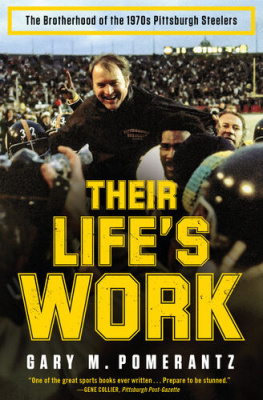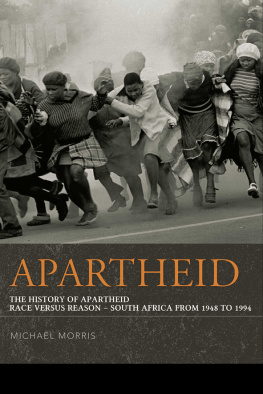ATLANTA, Cradle of the New South
CIVIL WAR AMERICA
Gary W. Gallagher,
Peter S. Carmichael,
Caroline E. Janney, and
Aaron Sheehan-Dean, editors
This book was published with the assistance of the Fred W. Morrison Fund for Southern Studies of the University of North Carolina Press.
2013 The University of North Carolina Press
All rights reserved
Set in Minion Pro by codeMantra
Manufactured in the United States of America
The paper in this book meets the guidelines for permanence and durability of the Committee on Production Guidelines for Book Longevity of the Council on Library Resources.
The University of North Carolina Press has been a member of the Green Press Initiative since 2003.
Library of Congress Cataloging-in-Publication Data
Link, William A.
Atlanta, cradle of the New South : race and remembering in the Civil Wars aftermath / William A. Link.
pages cm. (Civil War America)
Includes bibliographical references and index.
ISBN 978-1-4696-0776-4 (cloth : alk. paper)
ISBN 978-1-4696-2655-0 (pbk. : alk. paper)
1. Atlanta (Ga.)Race relationsHistory. 2. United StatesHistoryCivil War, 18611865Influence. 3. African AmericansGeorgiaAtlantaSocial conditions. 4. MemorySocial aspectsGeorgiaAtlanta. 5. Atlanta (Ga.)Social conditions I. Title.
F 294. A 89 N 4454 2013
305.8009758231dc23
2012044361
For my graduate students, past and present
Contents
ONE
A Troublesome Thing: Invasion
TWO
Ocean of Ruins: Destruction and Rebirth
THREE
A Forgetfulness of the Past: Rebuilding the Racial Order
FOUR
Every Contrivance of Cruelty: Violence and White Supremacy in the New South
FIVE
We Are Rising: Schooling the City
SIX
Wheel within a Wheel: Competing Visions
SEVEN
The New South in Crisis
Table, Map, and Illustrations
TABLE
MAP
ILLUSTRATIONS
ATLANTA, Cradle of the New South
Introduction
In 1886, civic booster and newspaper editor Henry W. Grady became one of the most successful popularizers of what he and others called a New South. Grady wanted to hasten the Souths rebirth. The specific locale for his call to arms was postCivil War Atlanta. Destroyed by war, in two decades the city had rebuilt itself and became a leading, dynamic urban center. Grady emphasized the city as a center of a newly industrialized South that had abandoned the economic bases of the old slaveholding order. His New South incorporated some powerful notions that were reflective of Atlantas new self-image. Especially among whites in the growing city, there was a strong sense that they had rebounded from the war and were at the leading edge of dynamic economic tendencies. An early historian claimed that the city was everywhere regarded as the leading representative city of the New South and that there was no place in the South... more thoroughly American. It was a city, he wrote in 1905, where different people meet, fraternize and unite in one harmonious whole in a spirit of toleration in thought, speech and conduct.
Sixty years ago, C. Vann Woodward described the New South as nothing more than a slogan, a rallying cry. Behind the slogan lay an ideology that embodied a faith in the future combined with a passion for the past, alternating between a forthright recantation to an affable and uncritical optimism. Woodward urged historians to examine critically the lingering effects of a New South mentality in order to understand its significance and power.
During the 1980s, historians reexamined the concept of the Lost Cause. Defeat, wrote Gaines Foster, brought pain and confusion to white southerners, but their understanding of their immediate history fed into a New South ideology. Charles Reagan Wilson maintained the importance of southern commemorations of the Civil War, as they became a sort of civil religion, which white southerners used to define themselves.
David W. Blights Race and Reunion (2001) defined the field of Civil War memory studies. Unlike previous scholars, Blight portrays the Lost Cause as part of a larger, national debate about the meaning of the war. This debate involved three competing narratives: reconciliationist, white supremacist, and emancipationist. He found that in public discourse, North and South, the movement toward reunion both used and trumped race. The dominant memory of the war, in other words, was that southerners and northerners shared a sense of common nationality. This sense of reunion obscured the memorialization of the war as a war against slavery, fought to liberate 4 million enslaved African Americans. Blight describes the Civil War as the event that determined how Americans understood themselves, defined their nation, and shaped a vision for the future. At the center of this story was the fact that race was scrubbed clean from the memory of the war.
Despite an outpouring of scholarship about the South after the Civil War, historians are still trying to understand the most devastating war in our history. The wars meaning directly related to the shaping, branding, and self-identity of Henry Gradys New South. That concept was rooted not in the 1880s but in an evolving redefinition of the experiences and meaning of the war itself, a redefinition that extended over a long period of time. Robert Penn Warren once described the Civil War as the greatest single event in our history. Its significance not only lay in what people remembered about Unpacking these legacies requires understanding how southerners, white and black, came to understand their past. This involves expanding our understanding of the Civil Wars aftermath beyond concepts of memory to a comprehension of its meaning.
This book considers a central question about the South in the aftermath of the Civil War: What was the relationship between war and the emergence of a New South? How did the struggle over the defining moment of the lives of nineteenth-century southernersdevastating, destructive, and disorienting warfareshape the ways that they constructed their future? Inevitably, the ways in which the war affected southerners were far from uniform, but the stakes were high in this ongoing struggle to define what it meant. While whites embraced the concept of the Lost Causeand a version of the past that eliminated the significance of slavery and race from the warblack people remembered the war as a central event in their history because of the destruction of slavery and their ensuing liberation. The wars meaning evoked contested versions of the past and the platform from which people argued about the shape of the future.
Atlanta provided a battleground in a larger, national struggle. In the aftermath of war, the citys white boosters trumpeted the New South as a slogan defining the city in a context of defeat, destruction, and rejuvenation. Leaders such as Henry Grady wanted to abandon the economic aspects of that old order but not its racial component; their version of the future assumed that economic progress would be accompanied by white supremacy. Grady and others wanted to reimagine, update, and reposition the social ethic of the Old South, which rested on white supremacy, in a new post-emancipation, free-labor, industrializing South. In many respects, this contradictory conceptinvolving rosy progress combined with caste-based subordinationwas created and marketed from postwar Atlanta, which represented a path for development. The New South was a concept distinctively associated with the city, which blazed a trail in showing postwar whites how they could modernize, attract outside capitalists, and provide for stable social development.
Although Atlanta was exceptional because of its keen orientation toward a world capitalist system, in most ways the city resembled the rest of the South. As went Atlanta, so went the postCivil War South: the citys history embodied the social, economic, and cultural trends of the late nineteenth century. Nonetheless, the Civil War defined Atlantas history as it did that of few other communities in the United States. From a small crossroads village springing into existence during the late antebellum period, Atlanta emerged as a major depot of the Confederacy. William T. Shermans successful campaign to conquer the city provided a crucial victory for the Union cause. Destroyed during the Confederate defense and Union siege and occupation, Atlanta recovered, growing into the most important interior town of the postCivil War South. Relying on its strategic position as a railroad hub, the city also benefited from the activities of an aggressive group of booster-entrepreneurs who relentlessly promoted urban growth and development and marketed the concept of Atlanta as the Gate City.
Next page






